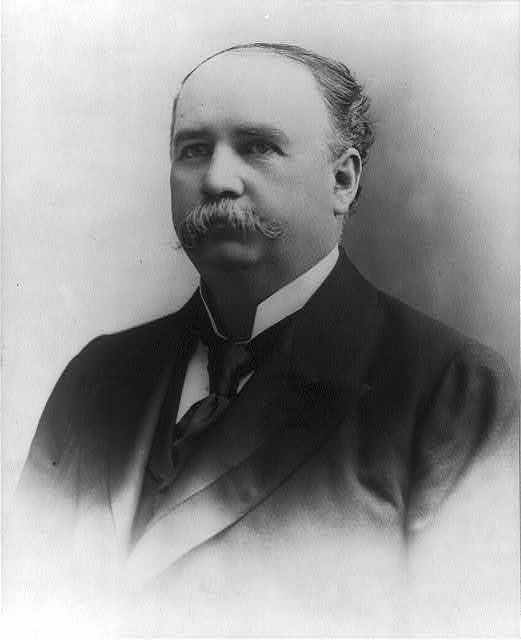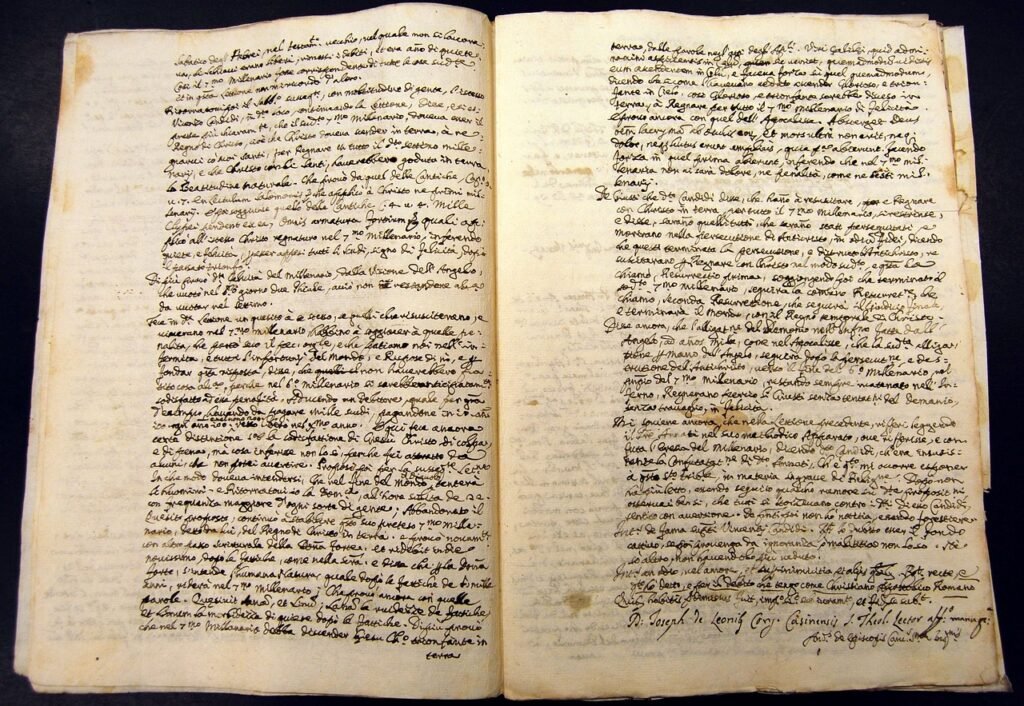




Garret A. Hobart
Garret Augustus Hobart (1844–1899), the 24th Vice President of the United States, played a crucial yet often overlooked role in shaping the modern vice presidency. As William McKinley’s second-in-command, Hobart distinguished himself through his close collaboration with the president, helping to redefine the office as an active and influential part of the executive branch.
Early Life and Education
Garret A. Hobart was born on June 3, 1844, in Long Branch, New Jersey, to Addison Willard Hobart and Sophia Vanderveer Hobart. The Hobart family traced its roots to early colonial America and upheld values of hard work, education, and civic responsibility. Garret’s father was a schoolteacher and later a farmer, instilling in his children a strong appreciation for learning and discipline (Doenecke, 1981).
Hobart’s education began in local schools, where he demonstrated an early aptitude for academics. He went on to attend Rutgers College (now Rutgers University) in New Brunswick, New Jersey, graduating in 1863. During his time at Rutgers, Hobart excelled in rhetoric and debate, foreshadowing his future success as a lawyer and politician. After graduation, he studied law under the mentorship of Socrates Tuttle, a prominent attorney and politician in Paterson, New Jersey. Hobart was admitted to the New Jersey bar in 1866 and quickly established a thriving legal practice (McElroy, 1910).
Early Political Career
Hobart’s entry into politics was facilitated by his association with Socrates Tuttle, whose daughter, Jennie Tuttle, Hobart married in 1869. This union connected Hobart to a network of influential political figures and business leaders in New Jersey. He began his political career as city attorney for Paterson in 1871, a position that allowed him to gain experience in municipal governance and public service (Doenecke, 1981).
In 1872, Hobart was elected to the New Jersey General Assembly, where he served two terms. During his tenure, he focused on fiscal responsibility, infrastructure development, and industrial growth. His pragmatic approach to governance and ability to build consensus earned him respect across party lines. In 1876, Hobart was elected to the New Jersey Senate, where he served until 1882. He became Senate president in 1881, further solidifying his reputation as a skilled legislator and leader (McElroy, 1910).
Business Success and Party Leadership
Hobart’s career extended beyond politics into the realms of business and finance. By the 1880s, he had become a prominent figure in New Jersey’s business community, serving as a director or officer for several corporations, including banks, railroads, and utilities. His business acumen and understanding of economic issues enhanced his political influence, particularly within the Republican Party, where he emerged as a powerful fundraiser and strategist (Rove, 2015).
As chairman of the New Jersey Republican State Committee from 1880 to 1891, Hobart played a key role in revitalizing the party at the state level. He was instrumental in securing Republican victories in state and national elections, earning the trust and admiration of party leaders. Hobart’s ability to navigate both political and business spheres made him a natural choice for higher office (Doenecke, 1981).
The Vice Presidency
In 1896, Garret A. Hobart was selected as William McKinley’s running mate for the Republican presidential ticket. The decision was strategic: Hobart’s strong ties to the business community and his reputation as a party loyalist balanced McKinley’s appeal as a national leader. The McKinley-Hobart ticket campaigned on a platform of economic stability, support for the gold standard, and industrial growth, winning a decisive victory over Democratic candidate William Jennings Bryan (McElroy, 1910).
Hobart’s tenure as Vice President marked a turning point in the office’s history. Traditionally a ceremonial role, the vice presidency had often been viewed as a political afterthought. However, Hobart redefined the position by forging a close working relationship with President McKinley. Known as “Assistant President,” Hobart served as a trusted advisor, regularly attending cabinet meetings and offering counsel on a wide range of issues, including economic policy and foreign affairs (Doenecke, 1981).
Hobart played a particularly significant role in supporting McKinley’s pro-business agenda. He worked behind the scenes to build support for the Dingley Tariff of 1897, which raised duties on imports to protect American industries. Additionally, Hobart’s influence extended to foreign policy, as he advocated for maintaining American interests abroad during the early stages of the Spanish-American War (Rove, 2015).
Personal Life and Character
Hobart’s personal life was characterized by his devotion to his family and community. He and Jennie Tuttle Hobart had two children who survived to adulthood, Garret Jr. and Fannie. The Hobarts were known for their philanthropy, contributing to educational and religious institutions in New Jersey. Their home, known as “The Carrollton,” in Paterson, became a hub of social and political activity, hosting dignitaries and community leaders (McElroy, 1910).
Hobart was widely admired for his charm, humility, and ability to connect with people from all walks of life. His warm personality and affable demeanor earned him the nickname “The Sunshine Vice President,” reflecting his optimistic outlook and positive influence on those around him (Doenecke, 1981).
Declining Health and Death
Hobart’s tenure as Vice President was cut short by declining health. In early 1899, he was diagnosed with a heart condition, which gradually worsened over the course of the year. Despite his illness, Hobart continued to fulfill his duties as Vice President, demonstrating remarkable resilience and dedication to public service (McElroy, 1910).
On November 21, 1899, Garret A. Hobart passed away at the age of 55 in Paterson, New Jersey. His death marked the first time since 1875 that a sitting Vice President had died in office. President McKinley and other national leaders mourned his loss, praising Hobart’s contributions to the nation and his role in transforming the vice presidency (Doenecke, 1981).
Legacy
Garret A. Hobart’s legacy lies in his redefinition of the vice presidency as an active and influential office. By establishing a close partnership with President McKinley, Hobart set a precedent for future vice presidents to serve as key advisors and collaborators within the executive branch. His contributions to economic policy, party leadership, and public service reflect his dedication to the principles of governance and progress (Rove, 2015).
While his tenure was brief, Hobart’s impact on the vice presidency and American politics remains significant. His ability to bridge the worlds of business and politics exemplified the potential for public officials to navigate complex challenges with integrity and pragmatism. Today, Hobart is remembered as a trailblazer whose work helped shape the modern vice presidency.
Final Summary
Garret A. Hobart’s life and career represent a model of public service, business leadership, and political innovation. From his humble beginnings in New Jersey to his tenure as Vice President of the United States, Hobart consistently demonstrated a commitment to fostering economic growth, strengthening party leadership, and advancing the responsibilities of the vice presidency. Though his life was cut short, his partnership with President McKinley and his influence on national policy underscore his enduring impact on American governance.
References
Doenecke, J. D. (1981). The Presidencies of William McKinley and Theodore Roosevelt. Lawrence: University Press of Kansas.
McElroy, R. M. (1910). Life of Garret Augustus Hobart. New York: Dodd, Mead & Company.
Rove, K. (2015). The Triumph of William McKinley: Why the Election of 1896 Still Matters. New York: Simon & Schuster.
Trefousse, H. L. (1989). Historical Perspectives on the Gilded Age and Progressive Era. Baton Rouge: Louisiana State University Press.
Woodward, C. V. (1951). Origins of the New South, 1877–1913. Baton Rouge: Louisiana State University Press.